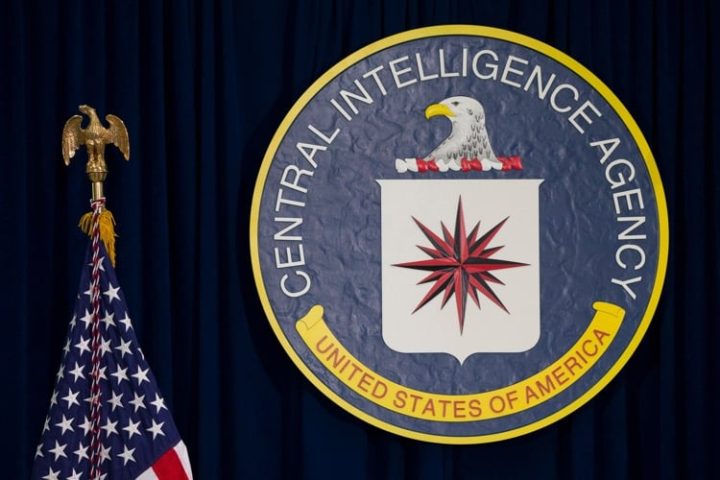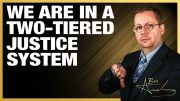
In February, Special Counsel John Durham reminded everyone what they should have learned two years ago from John Ratcliffe, the director of national intelligence: Hillary Clinton’s campaign for president concocted the Russia Collusion Hoax.
Early this month, he released the text messages that are the basis of his indictment of Clinton torpedo Michael Sussmann for lying to the FBI.
Now, having prevailed against Sussmann’s motion to dismiss the case against him, Durham has pulled back the sheets to expose another truth. The CIA, the prosecutor wrote in a new filing, knew the material that supposedly connected then-GOP presidential candidate Donald Trump to a Russian bank was “user created.”
The Filing
Durham’s latest revelation, again, is what Ratcliffe revealed in 2020: The Obama administration was well aware that Clinton was behind the hoax.
The filing on April 15 was an answer to Sussmann’s attempt to bar evidence about the accuracy of the data about Trump that he provided to the FBI. Durham wrote that Sussmann would admit that “no secret channel of communications” existed between Trump and the Russian bank, “then the Government would not seek to offer proof concerning the ultimate accuracy and reliability of the relevant data.”
Continued Durham:
At a minimum, however, the Government does expect to adduce evidence at trial reflecting (i) the fact that the FBI and Agency-2 [the CIA] concluded that the Russian Bank-1 allegations were untrue and unsupported and (ii) the primary bases for these conclusions, including the particular investigative and analytical steps taken by these agencies. (For example, while the FBI did not reach an ultimate conclusion regarding the data’s accuracy or whether it might have been in whole or in part genuine, spoofed, altered, or fabricated, Agency-2 concluded in early 2017 that the Russian Bank-1 data and Russian Phone Provider-1 data was not “technically plausible,” did not “withstand technical scrutiny,” “contained gaps,” “conflicted with [itself],” and was “user created and not machine/tool generated.” The Special Counsel’s Office has not reached a definitive conclusion in this regard.)
Calling an expert witness to discuss the accuracy and authenticity of the information Sussmann provided to the FBI, Durham explained, will help a jury understand the context of his statements for which he was indicted.
The prosecutor will call a witness to testify about the “the ultimate accuracy and/or reliability of the data,” the filing says:
For example, if called to testify on these matters, the Government’s expert would explain his view that while he has not determined with certainty whether the data at issue was in whole or in part authentic, fabricated, spoofed, or cherry-picked, the purported data nevertheless does not support a number of specific conclusions set forth in the primary white paper that the defendant … provided to the FBI. The expert would further testify that several statements in that white paper — including its main conclusion that the “only plausible” explanation for the referenced [information] was a covert communications channel — are inaccurate and/or over-stated.
The Indictment
Durham indicted Sussmann for lying to the FBI when he approached the bureau with dirt on Trump and told its general counsel, James Baker, that he was not working for a candidate. In a recent filing, the special prosecutor included a text message to Baker.
“Jim — it’s Michael Sussmann,” Sussmann texted:
I have something time-sensitive (and sensitive) I need to discuss. Do you have availibilty [sic] for a short meeting tomorrow? I’m coming on my own — not on behalf of a client or company — want to help the Bureau. Thanks. [Emphasis added.]
The FBI General Counsel responded: “Ok. I will find a time. What might work for you?” To which the defendant replied: “Any time but lunchtime — you name it.”
In fact, Sussmann’s billing records showed that he worked for Clinton, Durham alleged.
Durham has also used the term “conspirators” to describe the hoaxers:
Evidence, public information, and expected testimony clearly establishes by a preponderance of the evidence that the defendant and Tech Executive-1 worked in concert with each other and with agents of the Clinton Campaign to research and disseminate the Russian Bank-1 allegations. Accordingly, these parties acted as “joint venturer[s]” and therefore should be “considered as co-conspirator[s].”
In March, the Federal Election Commission fined the Clinton campaign and Democratic National Committee for covering up payments to political hitmen to create the notorious Steele Dossier.
H/T: New York Post



